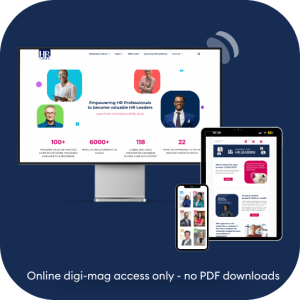The Covid-19 pandemic catalyzed a seismic shift in work dynamics as companies began implementing long-term work-from-home arrangements. In fact, some 55% of businesses globally now offer some capacity for remote work, and nearly 20% of the US workforce is now telecommuting on a full-time basis.
“Remote working has given rise to both positives and negatives for organizations,” says Kristen Fowler, Practice Lead at Clarke Caniff Strategic Search – a leading boutique executive search firm. “For every organization that is thriving in this new work-from-home world, we’re seeing others that are struggling to maintain productivity and business results.”
The difference between firms that are struggling and thriving? Thoughtful execution of a handful of best practices, tools and processes to ensure employee engagement and productivity.
Stand up comprehensive digital communication tools
With staff members working from home, it can be easy for leaders to get focused on getting work done and forget how important it is to connect with and check in on team members frequently. Working-from-home means leaders need to make a concerted effort to almost over-communicate with team members.
This serves a couple of functions: the first is that by overcommunicating, team members feel supported, and the second is that frequent communication implements a level of accountability necessary to succeed in the remote environment. Leaders may find that frequent meetings begin to eat into their workdays, but this is a new reality and requires adapting to. Communication is crucial and focusing on the success of the ‘whole’ organization will mean greater returns in the long run.
Establish virtual employee engagement initiatives
“Keeping employees engaged is a function of buy-in and positivity,” says Gina Curtis, Executive Recruiting Manager and Trainer / Coach at Employment BOOST – a leading professional career services and outplacement firm that uses Bonus.ly in-house for employee engagement. “We’ve found that, by having a platform where our staff members can reward each other for tasks – big and small – throughout the day keeps the environment positive and everyone connected despite the distance.”
There are many great tools that foster employee engagement, including Bonus.ly – which allows employees to give prepaid bonuses to team members as acknowledgement for work done or general positivity in the workplace. Because work performance is primarily driven by employees who are engaged and committed, making sure there is a system for employee rewards is important in a remote working environment.
Balance accountability with flexibility
For much of the remote workforce, working from home will actually mean more distractions throughout the day as opposed to fewer. Leaders need to take this into account as they manage workloads and performance. The best way to ensure productivity is to focus on results and instituting a Results Only Work Environment (ROWE).
“For positions that don’t require office hours much like sales and customer service, the ROWE environment allows professionals to get their work done whenever they feel like it as long as it’s done on time,” says James Philip, founder of Heavy Hitter Holdings – a portfolio of human capital, executive search, and career services companies. Implementing a ROWE structure gives employees the flexibility to get their work done while keeping everyone accountable for their work results.
Kane Carpenter is the Director of Marketing for Employment BOOST. In this role, Kane is responsible for driving market awareness across the entire JMJ Phillip Holdings portfolio of companies. Kane also manages Employment BOOST’s Career Services function for and leads hiring and recruitment efforts. Kane is currently pursuing an MBA degree from the University of Chicago Booth School of Business, holds a bachelor’s degree from Boston University, and is Google Advertising Certified.













